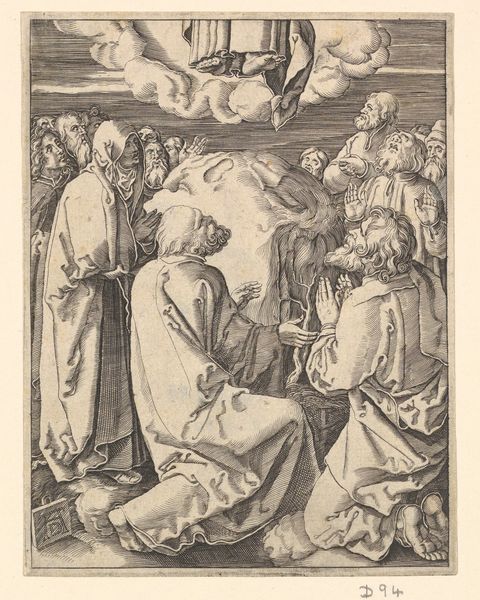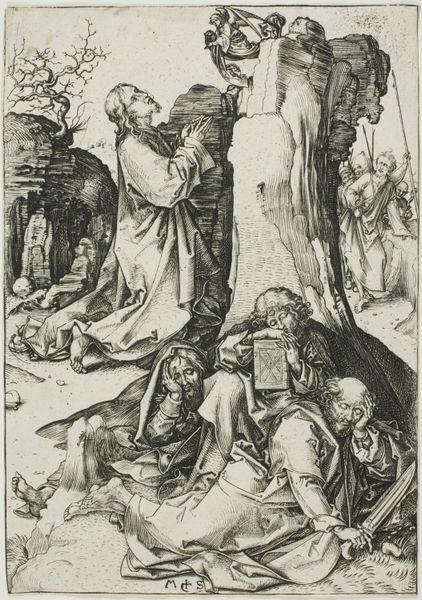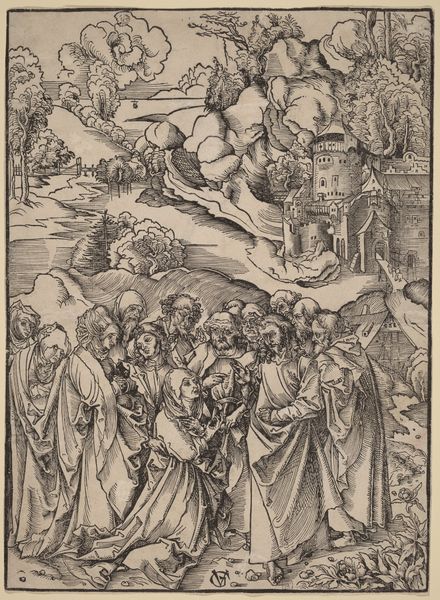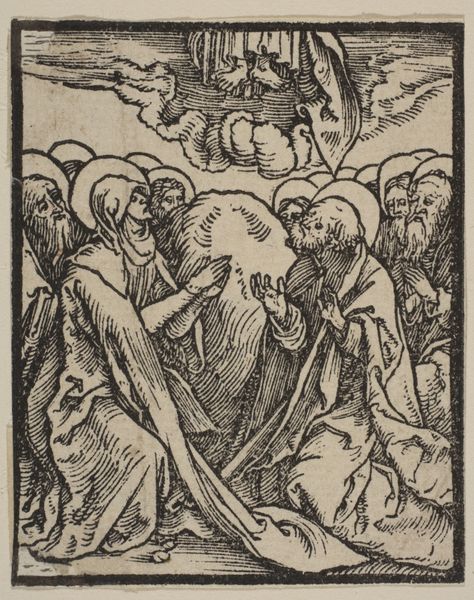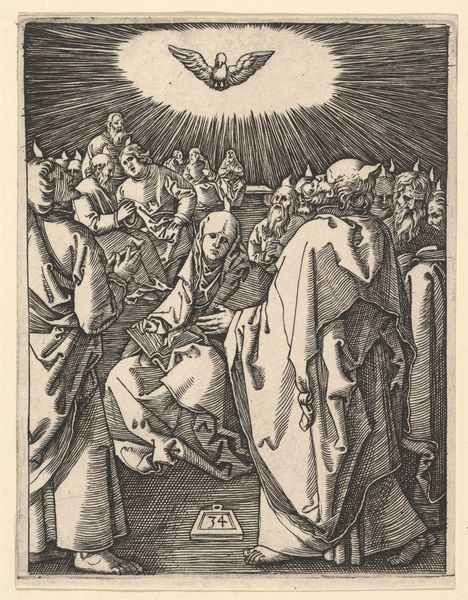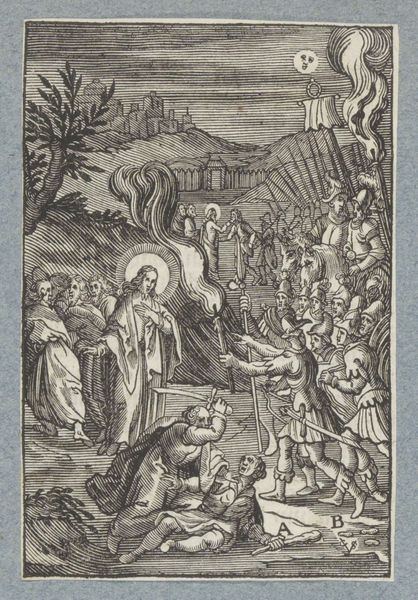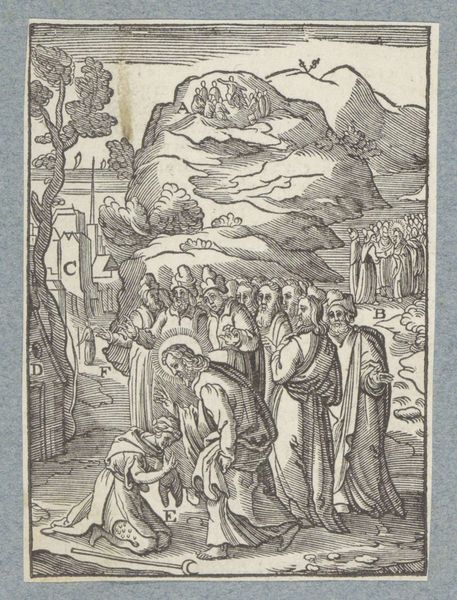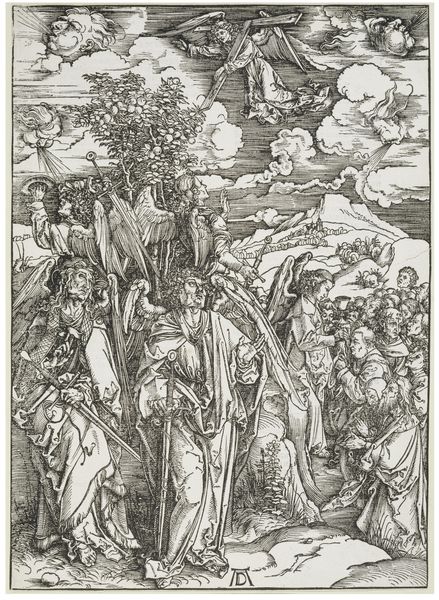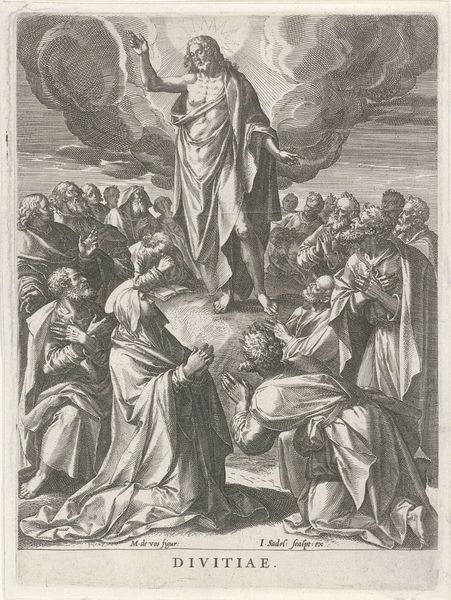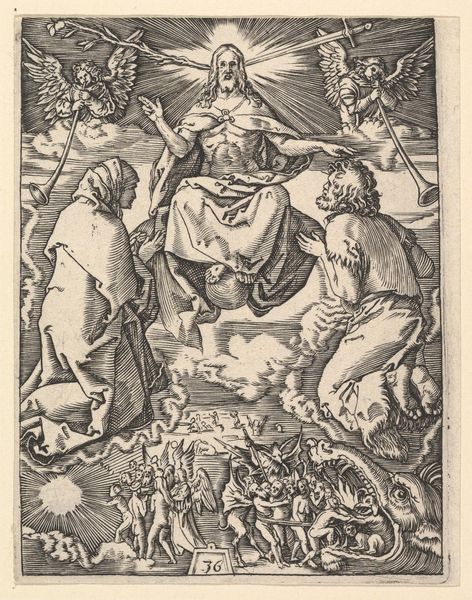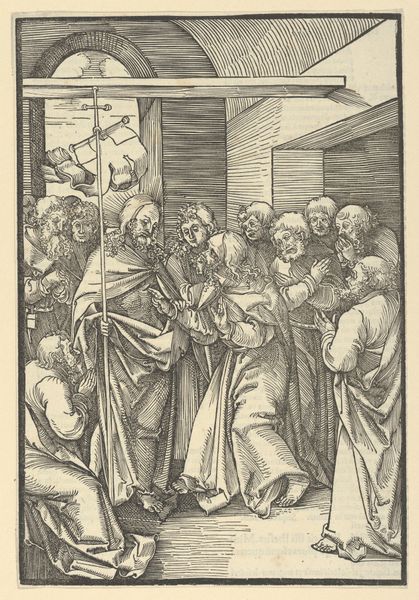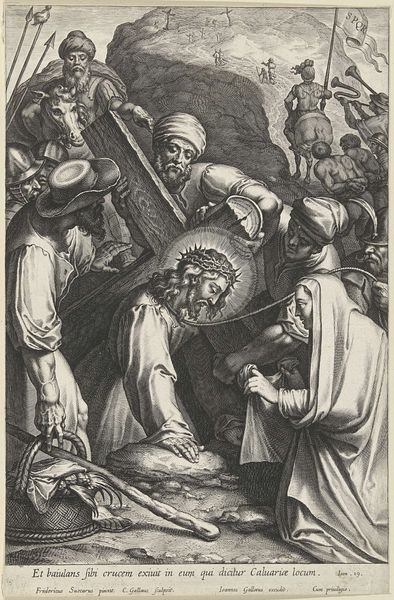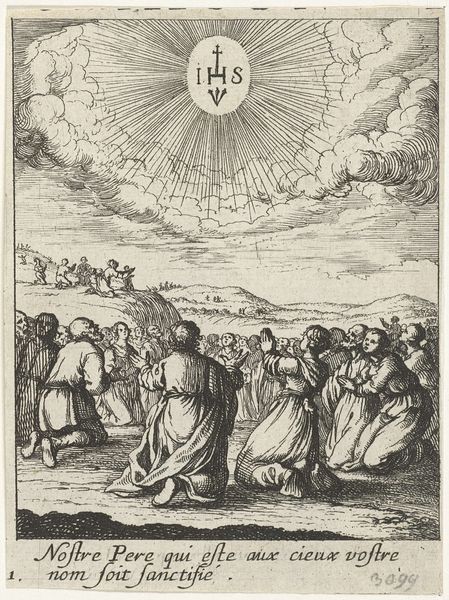
The Ascension of Christ into heaven, after Dürer 1495 - 1539
0:00
0:00
drawing, print, engraving
#
drawing
#
pen drawing
# print
#
history-painting
#
northern-renaissance
#
engraving
#
christ
Dimensions: Sheet: 5 1/16 in. × 4 in. (12.9 × 10.2 cm)
Copyright: Public Domain
Curator: Let's discuss "The Ascension of Christ into Heaven, after Dürer," an engraving by Marcantonio Raimondi from between 1495 and 1539, now at the Met. Editor: My first impression is of the dramatic upward thrust implied by the figures. There's a real sense of awe captured here through pose and perspective. Curator: Absolutely. It's crucial to remember that this is Raimondi working after Dürer. He was instrumental in disseminating Dürer's imagery. Here, we see Raimondi adapting and translating Dürer's style through the intaglio process. Think about the technical skill involved in translating that northern graphic style to engraving, the labour. Editor: I’m struck by the arrangement of the figures, those gathered below—their gestures of reverence directed toward the ascending Christ. Notice the intense gaze of those surrounding the Virgin, how Raimondi uses Dürer's iconography to convey the event's gravity and wonder. What does this moment represent? What about divine promise fulfilled and earthly farewell intertwined? Curator: And consider the market for prints like these at the time. Engravings were more easily reproduced than paintings, providing a cost effective mechanism for widespread religious devotion in the home and for aspiring artists keen to learn the techniques and designs from the masters. Editor: The ascent motif has resonated for centuries. In this rendition, Christ is not merely departing; he's actively being received by something we cannot entirely see but powerfully sense. The billowing clouds themselves seem almost sentient. The image offers a powerful commentary on hope and faith. Curator: The printing process also allowed for slight variations; each pull is a unique material manifestation of Raimondi's interpretation, and therefore Dürer’s invention, influencing the dissemination and perception of the image in Early Modern Europe. Editor: It is truly captivating to consider the historical and theological layers imbued within this work; its echoes in religious art through the ages is palpable. Curator: Seeing how artistic skills are both borrowed and newly deployed sheds light on art's historical, devotional and economic purposes at the time. Editor: This examination heightens one's understanding of the cultural values enshrined in this work, unveiling a dialogue between the celestial and earthly realms.
Comments
No comments
Be the first to comment and join the conversation on the ultimate creative platform.
